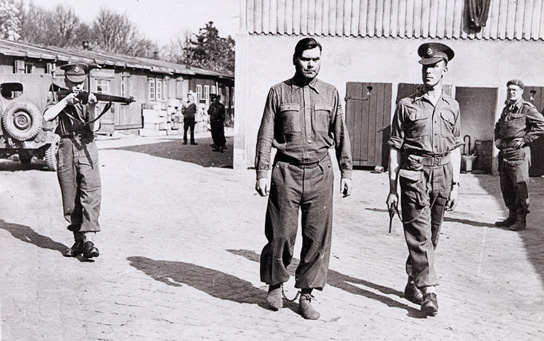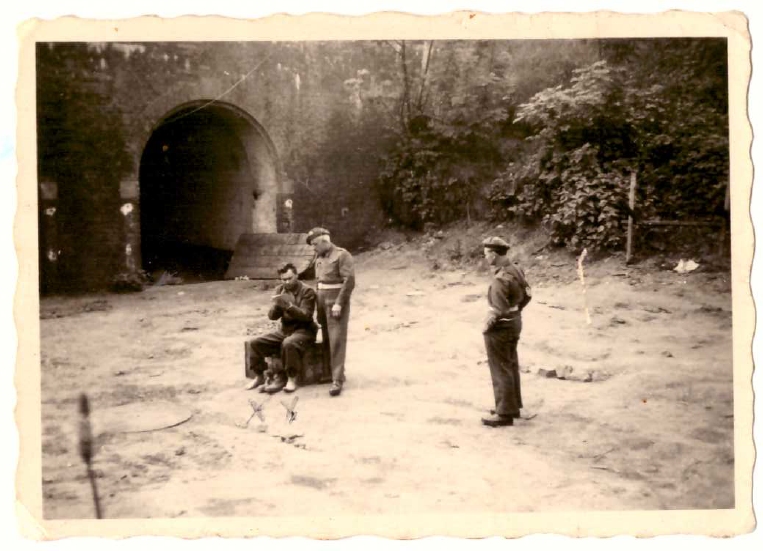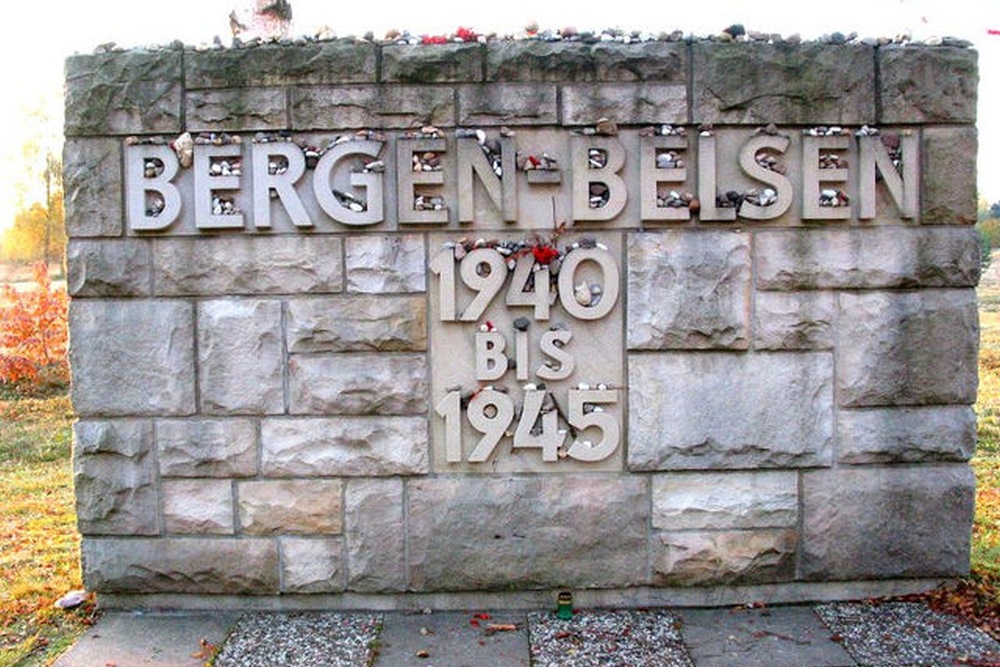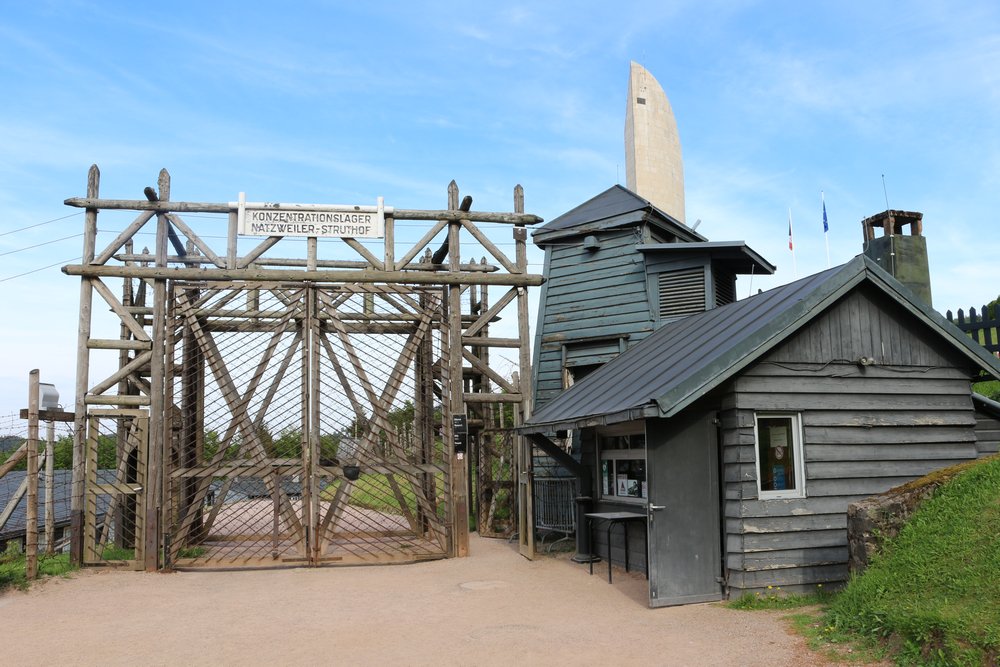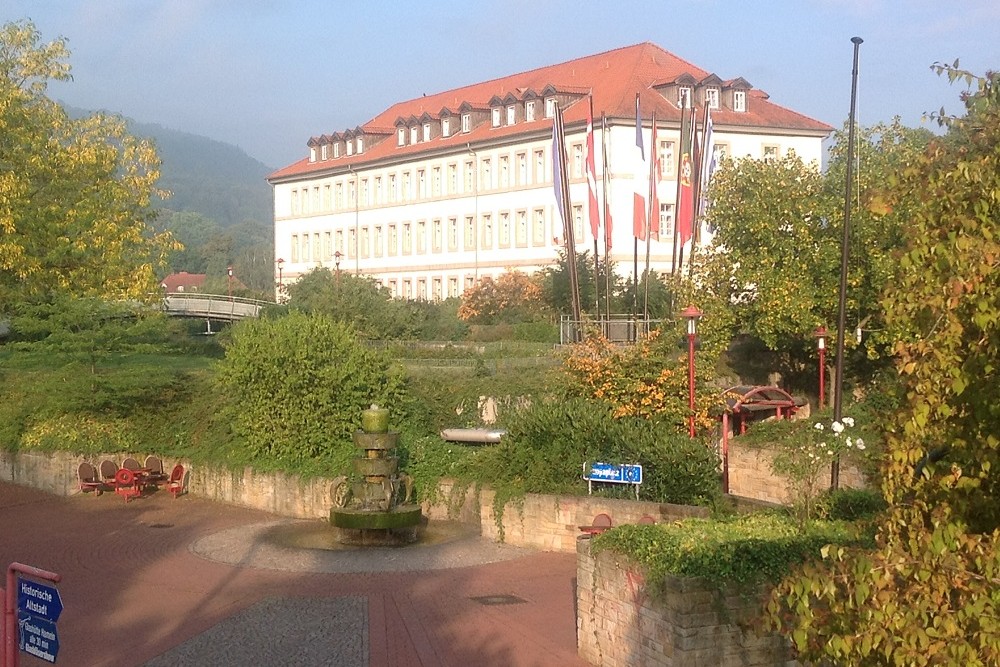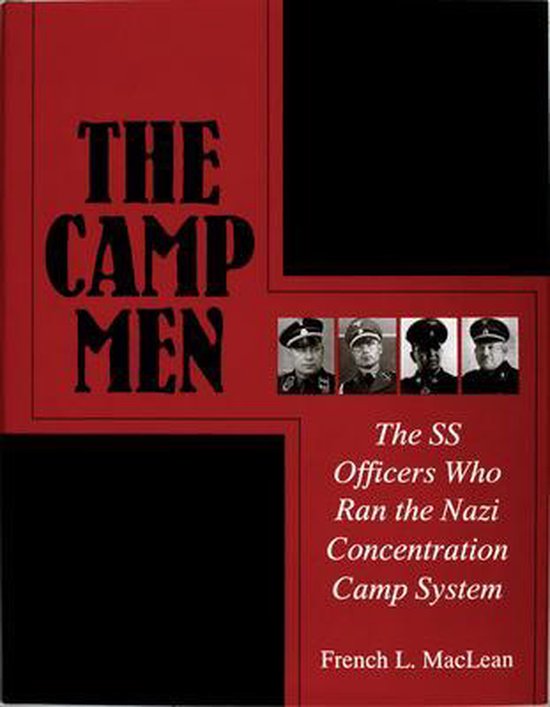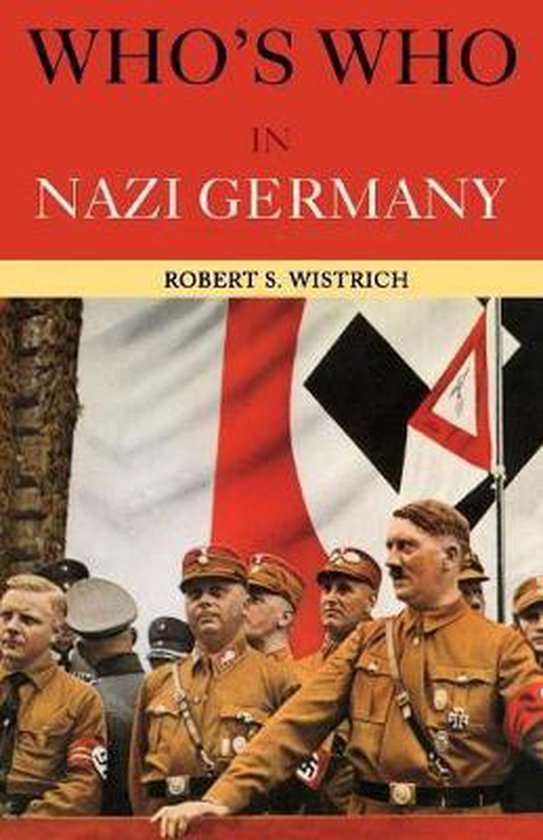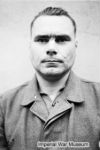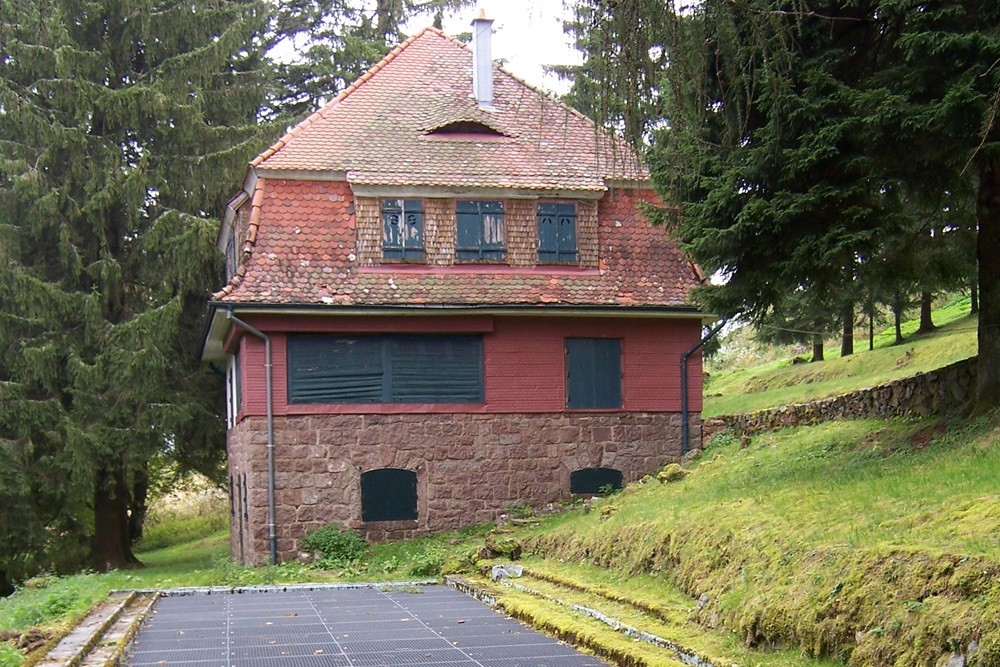Josef Kramer (1906 - 1945)
Josef Kramer was born an only child in a middle-class family on November 10, 1906, in Munich, the cradle of National Socialism. He spent his youth in Augsburg and initially worked as an accountant. After losing his job, the only future he could see was in the National Socialist Party. In December 1931, he joined the NSDAP and in January 1932, he joined the Schutzstaffel (SS). He began his career within the German concentration camps when he became a guard at Dachau in 1934. That same year, he was reassigned to Esterwegen, one of the so-called Frühe Konzentrationslager (early concentration camps). He returned to Dachau in 1936, but only shortly, because from 1937, he worked as an adjutant to the Sachsenhausen camp commander. He held the same position in Mauthausen from 1938 to 1940.
Between May and the end of October 1940, Kramer was assigned as Rudolf Höss' adjutant in Auschwitz. Together with Höss, he inspected the Monowitz site where a factory of I.G. Farben for the production of synthetic rubber and petrol was then built. After his short time spent in Auschwitz, Kramer was appointed Lagerführer – not to be confused with Lagerkommandant – in Dachau. In April 1941, he was transferred to Natzweiler. There, he was initially Schutzhaftlagerführer (deputy camp commander), but his promotion to camp commander followed in July 1942.
As camp commander at Natzweiler, Kramer was personally involved in the gassing of eighty prisoners. The first gassing concerned 15 female prisoners. They were stripped and then sent into the gas chamber. "When the door was closed, they started screaming," Kramer explained to his interrogators after the war." I threw in a certain amount of salts through a tube, which was right above the peephole. (...) I illuminated the inner space (...) and looked through the peephole at what was happening inside. I saw that the women continued breathing for about half a minute before falling down on the floor." The skeletons of the women were donated for anatomical research to the collection of Professor Hirt of the University of Strasbourg. This same process was later carried out again multiple times, so that eventually eighty prisoners were killed. When an interrogator asked Kramer after the war how he felt while killing these prisoners, he replied: "I didn't feel any emotions while executing this because I was ordered to kill these eighty prisoners in the way I explained to you. This was how I was trained."
In early May 1944, Kramer returned to Auschwitz-Birkenau to help with the extermination of Hungarian Jews who were deported to the camp. Between May 15 and July 9, 1944, about 430,000 Hungarian Jews were deported, most of them to the Auschwitz-Birkenau extermination camp. From May 8 to November 1944, Kramer was the commander of this camp, which was also referred to as Auschwitz II. Although Rudolf Höss was primarily responsible for the mass extermination of the Jews in this camp, Kramer was also involved. Several witnesses stated after the war that they had regularly seen him during the Selektionen, the selections that took place immediately after the arrival of a transport to separate able-bodied and unfit-for-work prisoners. The latter were killed in the gas chambers immediately upon arrival.
Kramer was not only cruel to his prisoners in Auschwitz-Birkenau – several witnesses confirmed that he had personally abused prisoners – but his staff also found him to be notoriously though. After the war, Doctor Franz Lucas stated he had tried to shirk his duties by pretending to suffer from gastrointestinal problems. When he saw that he had been added to a list of doctors to carry out the selection of a large transport of prisoners from Hungary, he made a strong protest. Kramer reacted to his subordinate's protest as follows: "I know that you are under investigation for favouring prisoners. I command you now to go to the railway platform and if you refuse my order, I will ensure you are arrested on the spot."
Kramer became particularly notorious as the camp commander of Bergen-Belsen. He was appointed to this camp on December 1, 1944. Since June 1943, the camp was officially designated an Aufenthaltslager and was mainly meant for so-called Austauschjuden, Jews who could be exchanged for Germans interned abroad. These Jews were given preferential treatment, so the structure of the camp was unlike any other concentration camp. In the spring of 1944, however, the camp was transformed into a place to receive sick prisoners from other concentration camps. Although the camp was considered an Erholungslager, or recovery camp, few sick prisoners got better here. The living conditions had degraded and slowly Bergen-Belsen became more similar to the other concentration camps.
Kramer, by now promoted to SS-Hauptstürmführer, completed the transition from Bergen-Belsen to an ‘ordinary’ concentration camp. In the camp section where the Austauschjuden stayed, the Sternlager (star camp), he abolished Jewish self-government and introduced the Kapo regime. This meant that, as in all other concentration camps, prisoners would be assigned to guard fellow inmates. Kramer also introduced collective punishments and roll calls. From January 1945, more and more prisoners who had been evacuated from camps in the east arrived at the camp. The camp was bursting at the seams and living conditions deteriorated drastically. Due to a food shortage and the epidemics that broke out due to poor hygiene, many thousands of prisoners died.
It remains to be seen whether Kramer could have done much to improve living conditions, because at this stage of the war there was not enough food available – certainly not for concentration camp prisoners – nor did he have any influence on the number of deportees arriving at the camp. However, he also did virtually nothing to improve living conditions: the large stocks of medicines and medical instruments that could have been at his disposal were not made available by him to the prisoners, even though among them were several doctors. Because Kramer allowed his prisoners to suffer massively, he was nicknamed ‘the Beast of Belsen’ by the British after the liberation of the camp. This liberation took place on April 12, 1945. Kramer personally guided the British through the chaos in the camp. The atrocities that were found in the camp shocked the liberators to no end. The photos taken in the camp went around the world and showed to many people for the first time the true nature of the Nazi concentration camps.
Kramer was arrested by the British and charged along with 43 other camp staff at the first Bergen-Belsen trial. This trial took place between September 17 and November 17, 1945 in Lüneburg and was carried out by a British military court. Most of the prisoners were on trial for crimes committed at Auschwitz-Birkenau and at Bergen-Belsen. Several witnesses confirmed that Kramer had been personally involved in the Selektionen in Auschwitz-Birkenau and that he had treated prisoners violently on several occasions. Kramer had also stated that he had personally been involved in a gassing at Natzweiler. He justified his actions by saying that he had simply followed orders, as he had been taught as an SS officer. The judges found Kramer guilty of both war crimes at Auschwitz-Birkenau and Bergen-Belsen. He was sentenced to death on November 17, 1945 and hanged in Hameln, Lower Saxony, on December 13, 1945.
Definitielijst
- Auschwitz-Birkenau
- The largest German concentration camp, located in Poland. Liberated on 26 January 1945. An estimated 1,1 million people, mainly Jews, perished here mainly in the gas chambers.
- concentration camp
- Closed camp where people are being held captive that are considered to be anti- social, enemies of the state, criminal or unwanted individuals. These groups mostly do not get a fair trial or are condemned to doing time in a camp.
- Dachau
- City in the German state of Bavaria where the Nazis established their first concentration camp.
- Jews
- Middle Eastern people with own religion that lived in Palestine. They distinguished themselves by their strong monotheism and the strict observance of the Law and tradition. During World War 2 the Jewish people were ruthlessly persecuted and annihilated by the German Nazis. . An estimated 6,000,000 Jews were exterminated.
- Kapo
- A Kapo was a prisoner in a concentration camp in Nazi Germany during World War 2 who was assigned to supervise other prisoners. A Kapo had to supervise the work of the prisoners and was responsible for their results on behalf of the SS.
- Mauthausen
- Place in Austria where the Nazi’s established a concentration camp from 1938 to 1945.
- National Socialism
- A political ideology drawn up by Hitler based on the superiority of the German race, the leader principle and fierce nationalism that was fed by the hard Peace of Versailles. National socialism was anti-democratic and racist. The doctrine was elaborated in Mein Kampf and organised in the NSDAP. From 1933 to 1945 National socialism was the basis of totalitarian Germany.
- Nazi
- Abbreviation of a national socialist.
- Schutzstaffel (SS)
- The Schutzstaffel commanded by Heinrich Himmler was a very powerful organisation within the Third Reich. The original goal of the SS was to protect Adolf Hitler and other Nazi’s but soon the SS was deployed for several military, security and police tasks. The SS guarded inter alia the concentration camps and manned the Einzatzgruppen. The armed branch of the SS was the Waffen-SS.
- Socialism
- Political ideology aiming at slight or no class differences. Means of production are owned by the state. Evolved as a response to capitalism. Karl Marx tried to substantiate socialism scientific.
- war crimes
- Crimes committed in wartime. Often concerning crimes committed by soldiers against civilians.
Information
- Article by:
- Kevin Prenger
- Translated by:
- Sophie Louwers
- Published on:
- 19-01-2025
- Feedback?
- Send it!
Related sights
Related books
Sources
- KL Auschwitz seen by the SS, Auschwitz Birkenau State Museum, Oswiecim, 2002.
- MACLEAN, F., The Camp Men, Schiffer Military History, Atglen (USA), 1999.
- SPECTOR, S. & ROZETT, R., Encyclopedie van de Holocaust, Kok, Kampen, 2004.
- WISTRICH, R.S., Who's who in Nazi Germany, Routledge, Londen, 2002.
- MAGRY, K., '40~'45 Toen & Nu nr. 89 - Bergen-Belsen, Soest, Uitgeverij Quo Vadis.
- en.wikipedia.org
- www.shoa.de
- www.scrapbookpages.com
- www.ess.uwe.ac.uk
- www.die-namen-der-nummern.de
- Deathcamps.org

